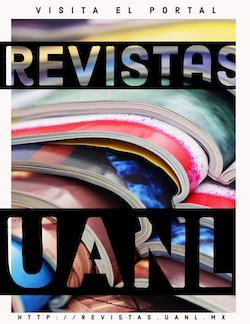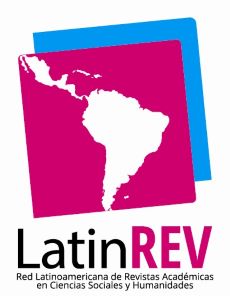Conflicts in school settings
from punitive to restorative
DOI:
https://doi.org/10.29105/msc4.6-78Keywords:
restorative practices, conflicts, education, culture of peaceAbstract
The various situations that arise in the school environment have been the subject of pedagogical reflections, however, it has not been possible to anchor a method or model from pedagogy that effectively penetrates schools to address those situations that they become conflicts, violence, aggressions, offenses. The punitive processes have not given results, hence, from the vision of justice as a natural human aspiration, restorative justice is glimpsed through various processes or restorative practices such as school mediation, school circles, school assembly allows the school community to communicate through dialogue exploring effective communication, listening to each other, creating consensus, transforming conflicts.
The restorative approach contributes to collaborative and community participation where the offenders, the victim or offended, and the school community can build communication of responsibility, respect, and trust, which promotes human beings who learn to live in community from the school. Justice strengthens the field of balancing the interests of all parties, allowing them to move towards a culture of peace.
Downloads
References
Chaux, E. y otros. (2008). Aulas en paz: 2. Estrategias pedagógicas. Revista Interamericana de Educación para la Democracia, 1(2), 124-145.
Constitución Política de los Estados Unidos Mexicanos (2023).
Cornelio Landero, E. (2020). Bases fundamentales de la cultura de paz. Eirene Estudios De Paz Y Conflictos, 2(3), 9–25. https://www.estudiosdepazyconflictos.com/index.php/eirene/article/view/63
Costello, B., Wachtel, J. y Wachtel, T. (2011a). Manual de prácticas restaurativas. IIRP.
Costello, B., Wachtel, J. y Wachtel, T. (2011b). Círculos restaurativos en los centros escolares. IIRP.
De Diego Vallejo, R. y Gestoso Guiller, C. (2010). Mediación, proceso, tácticas y técnicas. Pirámide.
Fry, D., y otros. (2021). Violencia contra niños, niñas y adolescentes en América Latina y el Caribe 2015-2021: Una revisión sistemática. UNICEF.
Habermas, J. (2010). Teoría de la acción comunicativa. Trota.
Lederach, J.P. (2000). El abecé de la paz y los conflictos. Educar para la paz. Cataratas.
OCDE. (2018). Programa para la Evaluación Internacional de Alumnos de la OCDE, PISA 2018 – RESULTADOS. https://www.oecd.org/pisa/publications/PISA2018_CN_MEX_Spanish.pdf
OMS. (2002). Informe mundial sobre la violencia y la salud: resumen. Washington, D.C., Organización Panamericana de la Salud. Oficina Regional para las Américas de la Organización Mundial de la Salud.
Programa Nacional de Convivencia Escolar. (2017). https://www.gob.mx/escuelalibredeacoso.
Trucco, D. (2017). Las violencias en el espacio escolar. CEPAL.
Tuvilla, J. (2004). Cultura de paz. Fundamentos y claves educativas. Desclée.
Zehr, H. (2010). El pequeño libro de la justicia restaurativa. Good books.
Downloads
Published
How to Cite
Issue
Section
License
Copyright (c) 2023 Journal MSC Métodos de Solución de Conflictos. Revista Internacional de Investigación Científica y Práctica en MSC

This work is licensed under a Creative Commons Attribution-NonCommercial 4.0 International License.
Los autores/as que publiquen en esta revista aceptan las siguientes condiciones:
a. Los autores/as conservarán sus derechos de autor y garantizarán a la revista el derecho de primera publicación de su obra, el cual estará simultáneamente sujeto a la Licencia Creative Commons Atribución-NoComercial 4.0 Internacional. que permite a terceros compartir la obra siempre que se indique su autor y su primera publicación esta revista.
b. Los autores/as pueden realizar otros acuerdos contractuales independientes y adicionales para la distribución no exclusiva de la versión del artículo publicado en esta revista (p. ej., incluirlo en un repositorio institucional o publicarlo en un libro) siempre que indiquen claramente que el trabajo se publicó por primera vez en MSC Métodos de Solución de Conflictos.
c. Se permite y recomienda a los autores/as a publicar su trabajo en Internet (por ejemplo en páginas institucionales o personales) posterior al proceso de revisión y publicación, ya que puede conducir a intercambios productivos y a una mayor y más rápida difusión del trabajo publicado (Véase El efecto del acceso abierto).







 MSC Métodos de Solución de Conflictos Vol. 5 Núm. 9, Julio-Diciembre 2025, es una publicación semestral editada por la Universidad Autónoma de Nuevo León, a través de la Facultad de Derecho y Criminología. Dirección de la publicación: Av. Universidad s/n Cd. Universitaria C.P. 66455, San Nicolás de los Garza, Nuevo León, México. revistamsc.uanl.mx, revistamsc@uanl.mx. Editor responsable: Dr. Francisco Javier Gorjón Gómez. Reserva de Derechos al Uso Exclusivo núm. 04-2023-110310161600-102 ISSN 2992-8370, ambos otorgados por el Instituto Nacional del Derecho de Autor. Responsable de la última actualización: Dr. Paris Alejandro Cabello Tijerina, Facultad de Derecho y Criminología Av. Universidad s/n Cd. Universitaria C.P. 66451, San Nicolás de los Garza, Nuevo León, México. Fecha de la última modificación: 28 de julio de 2025.
MSC Métodos de Solución de Conflictos Vol. 5 Núm. 9, Julio-Diciembre 2025, es una publicación semestral editada por la Universidad Autónoma de Nuevo León, a través de la Facultad de Derecho y Criminología. Dirección de la publicación: Av. Universidad s/n Cd. Universitaria C.P. 66455, San Nicolás de los Garza, Nuevo León, México. revistamsc.uanl.mx, revistamsc@uanl.mx. Editor responsable: Dr. Francisco Javier Gorjón Gómez. Reserva de Derechos al Uso Exclusivo núm. 04-2023-110310161600-102 ISSN 2992-8370, ambos otorgados por el Instituto Nacional del Derecho de Autor. Responsable de la última actualización: Dr. Paris Alejandro Cabello Tijerina, Facultad de Derecho y Criminología Av. Universidad s/n Cd. Universitaria C.P. 66451, San Nicolás de los Garza, Nuevo León, México. Fecha de la última modificación: 28 de julio de 2025.